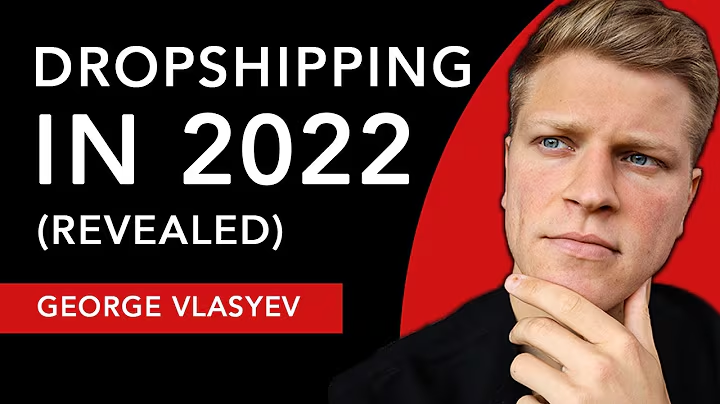Ultimate Guide: How to Sell on Amazon and Generate Six-Figure Income in 2023
Table of Contents:
- Introduction
- Amazon FBA vs Amazon FBM
2.1 Fulfillment by Amazon (FBA)
2.2 Fulfilled by Merchant (FBM)
- Types of Products to Sell on Amazon
3.1 Arbitrage Products
3.2 Wholesale Products
3.3 Private Label Products
- Finding Arbitrage Deals
4.1 Searching Local Retailers and Supermarkets
4.2 Using Online Tools for Arbitrage Deals
4.3 Signing up for Retailer Newsletters
- Finding Wholesale Products
5.1 Searching Online Wholesalers
5.2 Searching Local Wholesalers
- Analyzing Product Sales
6.1 Checking Best Sellers Rank (BSR)
6.2 Analyzing Product Reviews
6.3 Checking Product Variations
6.4 Testing Product Orders
- Adding Products to Amazon Inventory
7.1 Using Existing Amazon Listings
7.2 Creating New Listings for Wholesale Products
- Shipping Products to Amazon
8.1 Creating a Shipping Plan
8.2 Printing Labels and Box Information
8.3 Scheduling UPS Collection
- Scaling Up Your Amazon Business
9.1 Increasing Product Sales
9.2 Expanding Product Range
9.3 Maximizing Profitability
- Conclusion
Article: Selling on Amazon: A Comprehensive Guide for Beginners
Are you interested in starting your own online business and want to know how to sell on Amazon? Look no further! In this comprehensive guide, I will provide you with step-by-step instructions on how to start selling on Amazon and generate a six-figure income within a year. Whether you're a complete beginner or have some experience, this guide will equip you with the knowledge and tools you need to succeed.
1. Introduction
Selling on Amazon has become a lucrative opportunity for entrepreneurs around the world. With its vast customer base and reliable fulfillment system, Amazon provides an ideal platform to reach millions of potential buyers. In this guide, I will walk you through the process of setting up your Amazon seller account, finding profitable products to sell, and shipping them to Amazon for fulfillment.
2. Amazon FBA vs Amazon FBM
Before diving into the specifics of selling on Amazon, it's important to understand the two main methods of selling: Amazon FBA and Amazon FBM.
2.1 Fulfillment by Amazon (FBA)
Fulfillment by Amazon (FBA) is a service offered by Amazon where they handle the storage, packaging, and shipping of your products. With FBA, you send your products to Amazon's warehouses, and they take care of order fulfillment and customer service on your behalf. This allows you to focus on finding profitable products and growing your business without the hassle of logistics.
Pros of Amazon FBA:
- Hassle-free fulfillment and customer service
- Prime eligibility, which attracts more buyers
- Access to Amazon's vast customer base
Cons of Amazon FBA:
- Higher fees compared to FBM
- Limited control over shipping and packaging
2.2 Fulfilled by Merchant (FBM)
Fulfilled by Merchant (FBM) is an alternative to Amazon FBA, where you handle the storage, packaging, and shipping of your products yourself. With FBM, you are responsible for fulfilling orders directly to the customers and handling any customer service inquiries.
Pros of Amazon FBM:
- Lower fees compared to FBA
- More control over shipping and packaging
Cons of Amazon FBM:
- Time-consuming fulfillment process
- No Prime eligibility, which may deter some buyers
In the following sections, we will explore the different types of products you can sell on Amazon and how to find profitable opportunities within each category.
3. Types of Products to Sell on Amazon
When it comes to selling on Amazon, there are three main types of products you can consider: arbitrage products, wholesale products, and private label products.
3.1 Arbitrage Products
Arbitrage products are products that you can buy at a lower price from local retailers or supermarkets and resell on Amazon for a profit. The key to arbitrage is finding products that are available at a discounted price locally and can be sold at a higher price on Amazon. This method is relatively easy to start with, as you can simply visit your local stores and look for discounted items.
Pros of Arbitrage Products:
- Easy to get started with minimal investment
- Can find profitable deals at local stores
Cons of Arbitrage Products:
- Limited scalability due to limited product availability
- Need to constantly look for new deals to maintain sales
3.2 Wholesale Products
Wholesale products involve sourcing products directly from wholesalers or brands at a bulk price and reselling them on Amazon. Unlike arbitrage products, wholesale products offer more scalability as you can buy larger quantities and have access to a wider range of products. Building relationships with wholesalers and negotiating favorable terms can be the key to success in this category.
Pros of Wholesale Products:
- Higher scalability with access to a wide range of products
- Potential for higher profit margins
Cons of Wholesale Products:
- Higher upfront investment required for bulk orders
- Need to establish relationships with wholesalers
3.3 Private Label Products
Private label products are products that you create under your own brand by working with manufacturers in countries like China. With private label products, you have full control over branding, packaging, and pricing. This method offers the highest level of control and potential for building a unique brand on Amazon. However, it also requires a higher level of investment and expertise compared to arbitrage and wholesale products.
Pros of Private Label Products:
- Build a unique brand on Amazon
- Reduced competition as you are the only seller of your product
Cons of Private Label Products:
- Higher upfront investment for manufacturing and branding
- Need to conduct extensive product research and development
In the next few sections, I will provide tips and strategies on finding profitable products within each category and how to analyze their sales potential on Amazon.
(Continued in the next paragraph)



















